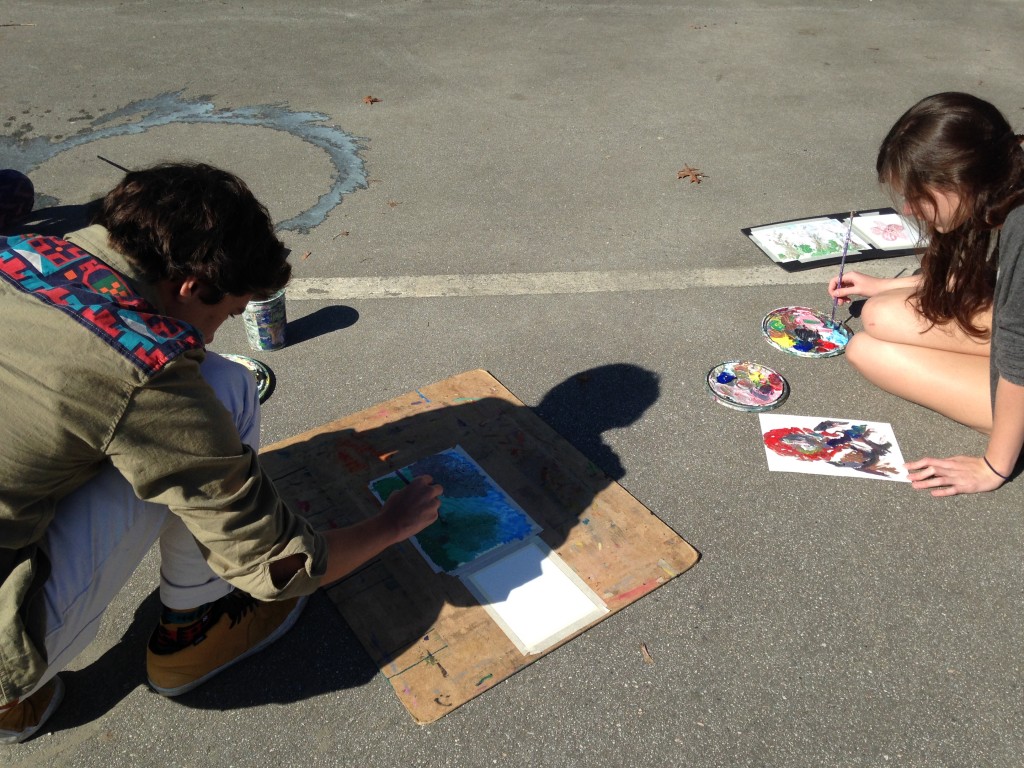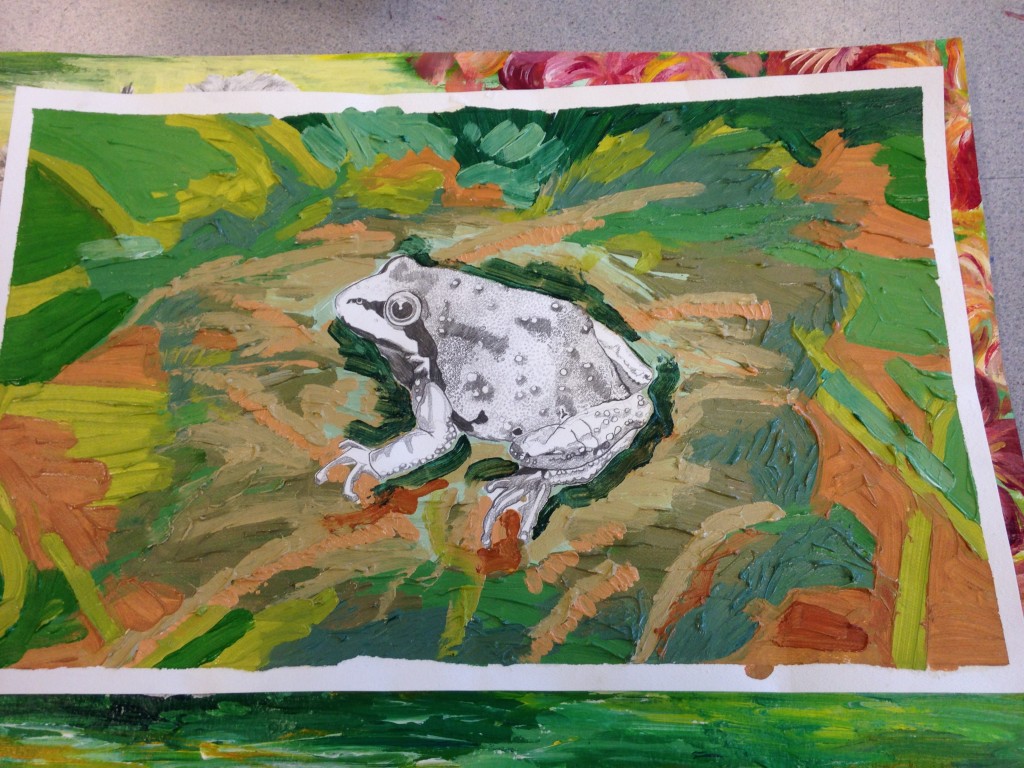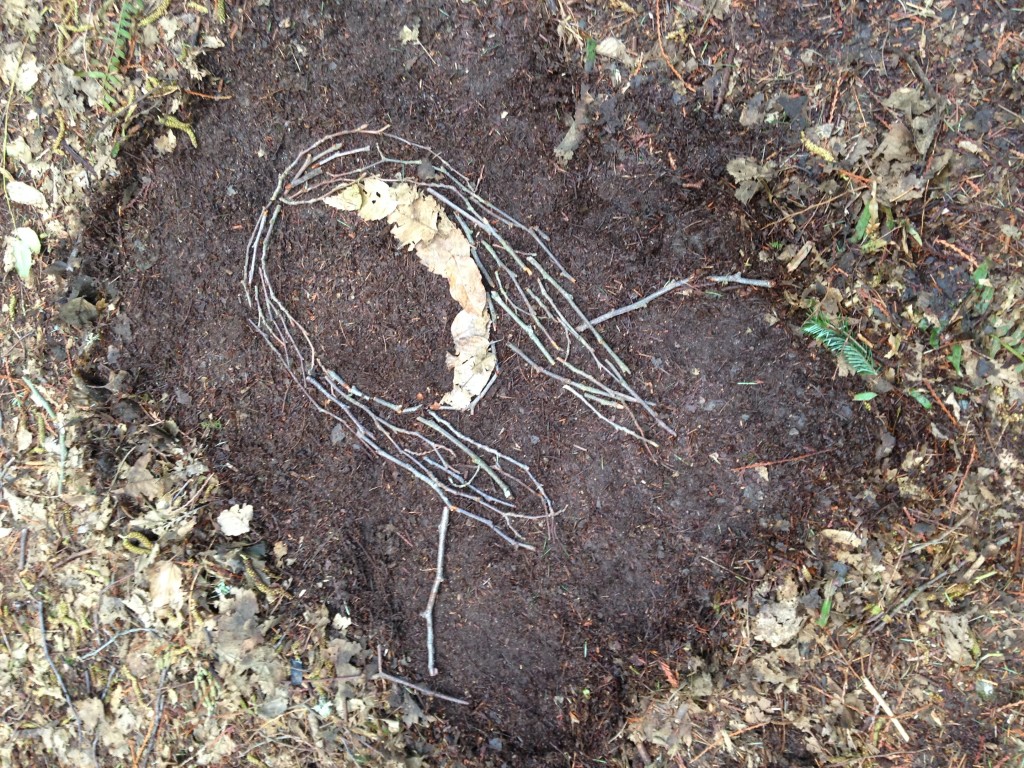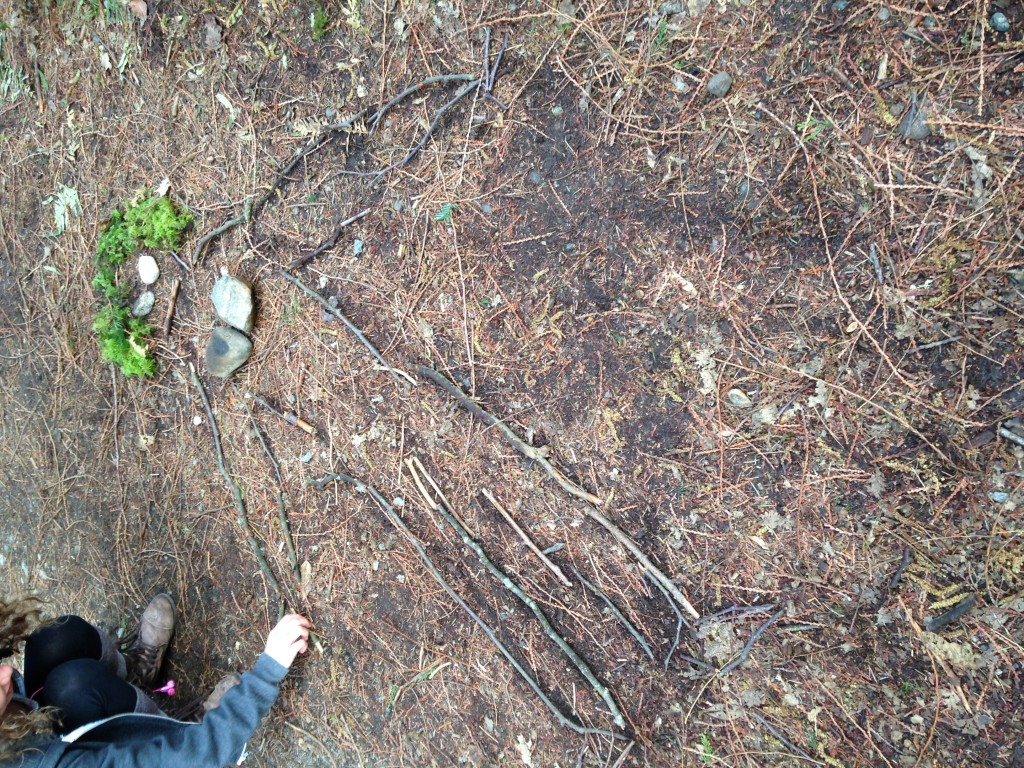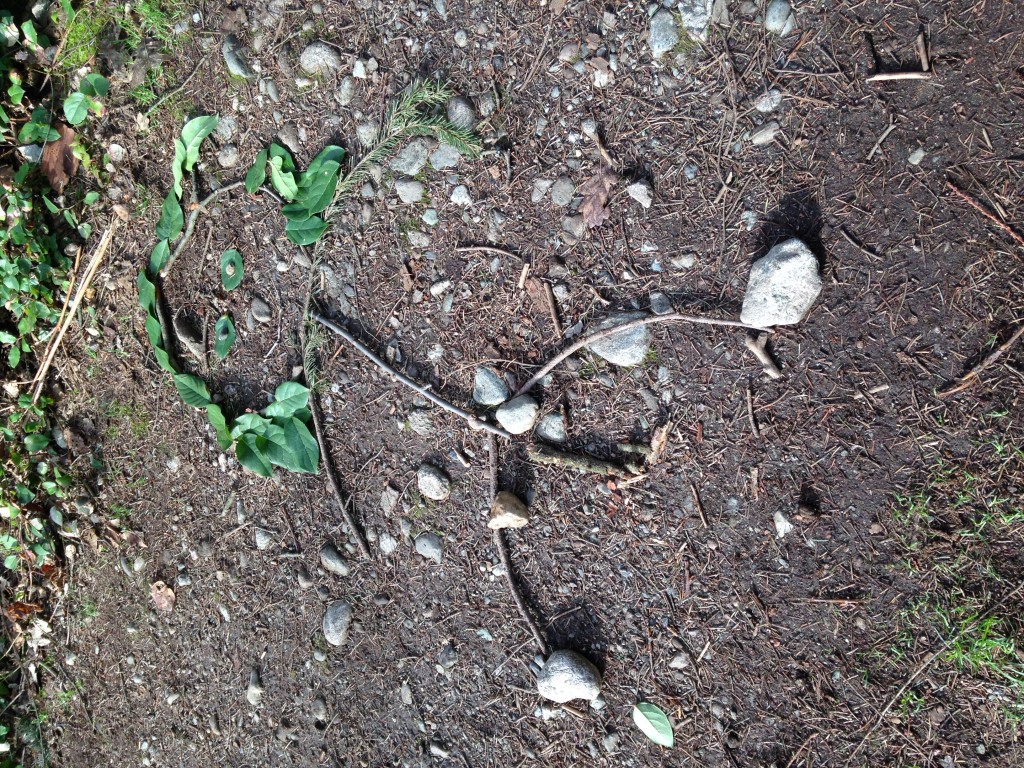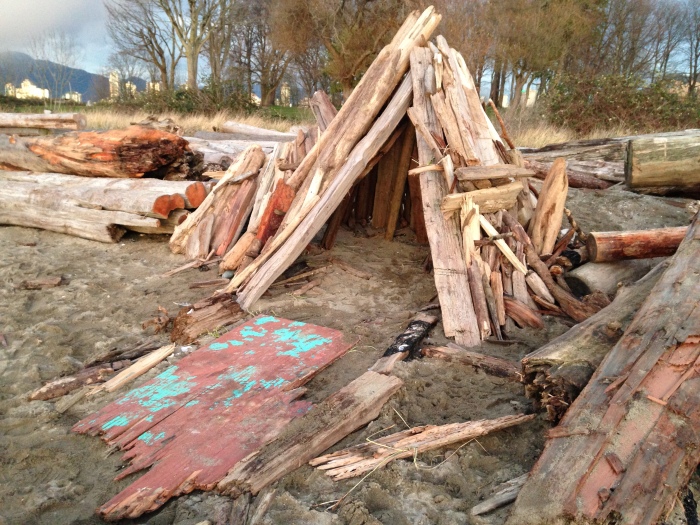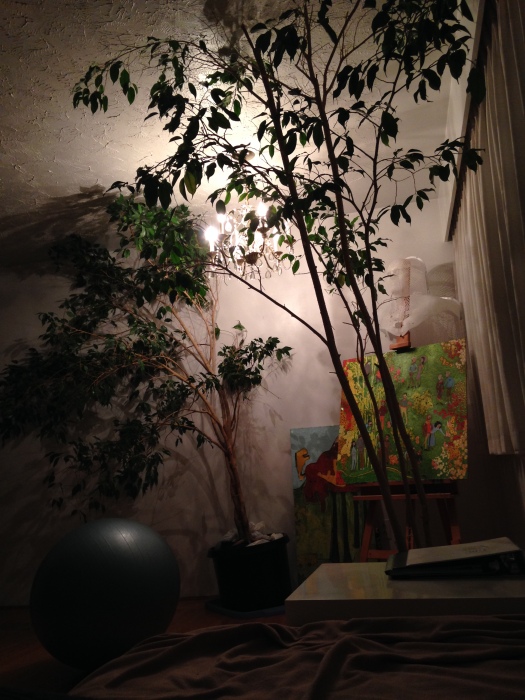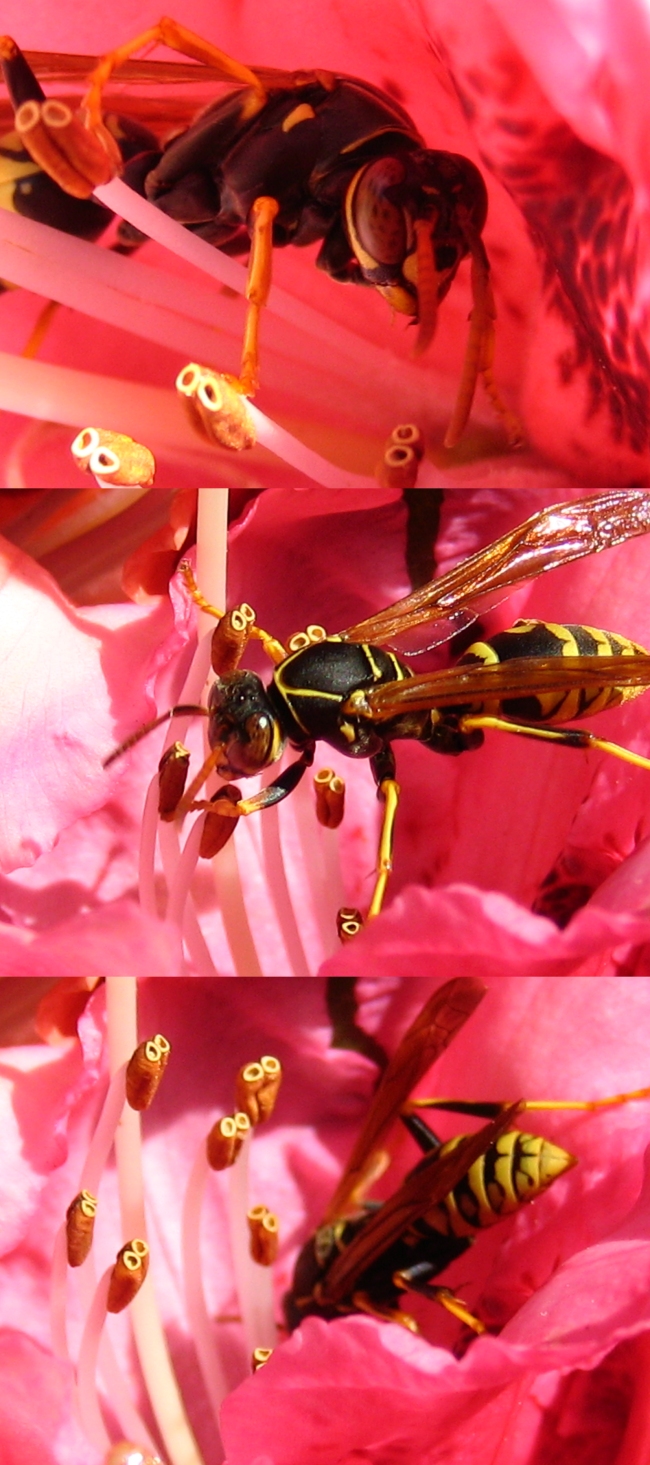My peers and I worked to create a series of pinhole camera lessons, mixing science and the photography art-form together. The video documents our collaboration process. Along with photography and physics, we also imagined that biology, chemistry, social studies and more could be brought into such a project. I certainly learned a lot. I know others would benefit from this sort of collaboration as well!
Tag Archives: art
Teaching Practicum Week 8
To summarize my practicum so far:
Units taught in Media Arts: Interview Unit (5 lessons), Storyboard + Film the Storyboard Unit (10 lessons), Pixilation Animation Unit (6 – 8 lessons). Visual Storytelling (1 class), Camera Tech (1 class), Scavenger Hunt (2 classes), Montage (4 classes), Commercial Re-edit (5 classes).
Units taught in Visual Arts: Gestural Drawing (4 lessons), Wind Sculptures (4 lessons), Land Art (3 lessons), Comic Book Page (6 – 8). Gestural Drawing (3 lessons), Memes (4 lessons), Fictional Creature Illustration (5 – 7). Implied Texture (3 lessons), Actual Texture (3 lessons), Final Textural Piece (6 lessons).
16 hours working with teacher and student crew filming short film entitled “I am William”. Principal Photography – the shooting of all the scenes.
4 hours setting up the Senior Visual Arts Show in the school gallery, hanging artwork, and arranging pieces.
Handling diversity. Art education allows for accommodation of variety of learners. Concepts were taught visually (visual aids like slide shows, movie clips, posters, visual demonstrations/exemplars) and kinetically (games, activities, outdoor excursions), vocally (short lecture on artists, directors, history of visual culture), as well as through written communication (handouts for students to fill out reciting terminology, and self-reflection/self-evaluation).
Media Art required extensive group work because of limitations of how much equipment must be shared by entire class. Students were randomly assigned groups at first, and then the process organically arrived at students choosing their own groups, which allowed for (surprisingly) more controlled and positive group dynamics.
Similar process in Visual Arts classes – I began by trying random grouping (numbering off students into random groups) and then found that by letting them select groups themselves, they were happier and more productive every time.
Think-pair-share was used on several occasions to encourage more class participation in questioning/discussion times, but I found that overall vocal students remained vocal, while less vocal students remained less vocal.
Hooks and Teaching Strategies overlapped – they became one and the same for me. I strategize, manage and hook students into participating by implementing some sort of visual/oral/activity in conjunction with lecture and work time every class.
Technology used in almost every class (projectors hooked to computers, using visuals and sound). Creating visually engaging slide presentations and including student work in some of those slide presentations.
The most difficult technological issue is trying to keep one step ahead of students learning about film equipment and software in Media Arts classes. I made substantial progress in that realm – I know much more about the software and hardware now, and feel confident that I have a strong base in that knowledge.
Field trips to a nearby park/trail (several blocks away from school, able to leave and return within the same period) and outdoor filming/drawing/showcasing sessions on school property.
I feel that I share many common interests with the students in the realm of Media and Visual Culture. It is a matter of making them become more conscious of why that Media is of interest to them. Showing familiar images (of memes, popular videos, popular advertisements) hook their attention, and then it is a matter of having students discuss the importance of that visual culture around us by posing them the right questions.
The Land Art lesson, after students had learned about Land Artists, and after they had gone out and made work of that kind themselves, went very well. We debriefed on the work they had created, looking at photographs of the ephemeral pieces, and discussed what worked/what did not work so well. The lesson then segued smoothly into Land Art created by past and current cultures, current incarnations of Land Art with First Nations influence (Rock Art, Inuksuks, etc.), and then First Nations oral storytelling into Visual Storytelling (comics). In one class, we accomplished so much. Students saw the importance of temporary work that they had made, its connection to ‘the big picture’ of the entirety of art history, the importance of past and contemporary aboriginal art-making, and then a new perspective on what it means to tell a story visually – more than just a silly comic strip. A group storytelling activity also allowed them to experience the ease of making up stories on the spot.
I am always friendly. I strive to be more stern in terms of consequences, but for the most part, I give reasons to students for each thing I ask of them (assignments must be on time because we all must move on towards new concepts at a steady pace…tell me if you are leaving the classroom because I am responsible for your safety in and outside of the classroom, etc). I think that reward is more positive than punishment.
Collaborative Days included meetings that allowed teachers from different departments to meet over the common goals of helping out/sorting out issues with particular students.
Professional Development Day involved going to a workshop that dealt with bullying – particularly in the case of aboriginal students, but the role-playing scenarios explored at the workshop could definitely be applied to all diversity of students.
Assessment is constantly morphing and progressing. Depending on the group, students can be more inclined towards self-evaluation, being aware and fair about how well they worked on projects, while other groups I handle the marks entirely (although students are always free to discuss a mark with me).
Teaching Practicum Week 7
My teaching philosophy has a lot to do with the observation that many of the students in my classes are not necessarily there to learn a subject that they take seriously – they do not see art as being a serious subject of study to help them in their future careers. So I see my role as an educator as being a catalyst for showing students that the general learning process is fulfilling and intriguing. In this way, I hope to show that art is in every other subject they learn, and that every other subject they learn is related to art.
During this practicum, I haven’t really had a chance to work in an interdisciplinary manner, however, I imagine that the more students can see that all subjects are connected, the more likely they are to recognize each subject is important to their learning as a whole. My personal inquiry has led me to focus on bringing art and outdoor education in particular together (bringing my classes outside as much as possible). Teaching media art has allowed me to bring art and technology together. In the future, one step at a time, I would hope to bring as many other different disciplines together as possible as well.
This week I will be taking two of my visual arts classes down to the library to utilize that particular resource. Although it is place that the students and myself are familiar with, each time I bring students into a new environment during class time, all the regular class dynamics seem to change. I have a general idea as to what I want them to gain and learn from the visit, however, I also would like to anticipate what some of the challenges of that setting might include – not that there should be anything particularly challenging about visiting the library. It’s just that I always seem to overlook small details when it comes to going outside the classroom with my students.
As always, I’m focused on engaging the students and getting them to think critically by considering and planning questions for the class ahead of time.
The following are some examples of ‘land art’ or ‘natural figure drawings’ my students made out on a nearby hiking trail. I thought the projects turned out pretty well for only having a short period of time for them to work on these! It goes to show that working with conventional materials is not always necessary when creating fine art.
Teaching Practicum Week 3
Starting teaching in the visual arts room this week allowed me to reflect on my art education philosophy as a whole. I planned my visual arts lessons to begin chronologically with gestural drawing, because not only is that kind of drawing a warmup on the micro scale, but also an artistic exercise in the macro sense too. Over the span of one period, I saw students drawings become more free and relaxed-looking, and it is my hope that by bringing this activity back into the classroom at regular intervals, it can help students feel more relaxed and confident about creating images in general.
One barrier that can arise in the task of teaching art is students quite simply choosing not to participate. For teachers of elective courses, the theme of trying not to push students too much as to drive them away from the non-compulsory course is a reoccurring subject. However, part of my teaching philosophy is the conviction that challenging projects inspire more creativity than the undemanding kinds. To me, this means that student attitude (the desire to do their best), participation, and energy put into the work is what matters most. The visual outcomes are not necessarily key. It is my intention to shift the focus away from prettiness or perfection of a final product, and move that focus towards process. In this way, there can still be the rigorous challenge of working on art pieces without feeling anxiety about the end results.
The projects I have planned for my visual arts classes are mainly themed as being ephemeral. That is my initial step towards implementing my art education philosophy. The next step, enacting classroom management that reflects those goals as well is a little trickier. I’m still not clear if more stringent regulations concerning classroom environment help or hinder the building of intrinsic student motivation or desire to do their best. By this I mean, there are many basic classroom management aspects that I will be working on improving, like clarity and completeness of instructions and assertiveness of statements, however I’m still not clear which kinds of students are likely to produce more work, more often – those who are obliged to put away their cellphones, or those who I warn by simply stating that they are making their own choice by wasting time?
My personal goal for this upcoming week is to have a firmer grasp on classroom management aspects that I believe will help students complete projects more effectively. I would like to be more assertive about project instructions, due dates, students who are off-task during class time, and bathroom breaks. I would like to implement a new rule in my classroom that students must sign out on the whiteboard whenever they leave the classroom. I would also like to make it clear that in upcoming projects (particularly in Media Arts) I will not be extending due dates. When I see students misusing technology (using devices for matters not relevant to work) I will use this as an occasion to remind them that due dates are firm and their own personal achievement/grades are at stake.
On Friday, I had the pleasure of attending a workshop for professional development day. This workshop consisted of practical group activities that allowed me to consider how I might react in various classroom scenarios. The focus was on indigenous groups, however, the role-playing in various scenarios could have applied to any number of bullying situations as well.
I hoped that this month could be named ‘the days of lesson planning’. No such luck. I’ve been hit with a storm of essay work, and nightly short assignments. When I can finally calm my mind to sit down, continue on with the process of accumulating artists, creating narratives for sequences of lessons that will guide students through steady paths of materials, techniques, and inspiration, I find that there’s always something else to do — another pot or pan to clean, another wind storm drawing me outside to go check on the boat at anchor…

Edible Building: Students will create the tallest, sturdiest, yummiest tower they can out of edible materials.
In any case, I have one unit plan ready. Here’s a quick over-view. It’s only part one because I created approximately 18 lessons in total under the theme ‘Ephemerality’, however I think it’s fair enough to start with the first 8, not make the thing too massive:
Title: Ephemerality: Part One
Themes: Ephemeral art-making, being able to ‘let go’, 2D and 3D, indoor and outdoor work, documenting work.
Rationale: Through various art mediums, including charcoal, conté, edible materials, sand, and biodegradable found objects, students will learn how to create work that they are willing to surrender to the passage of time, destruction by natural and/or artificial means. By introducing students to the concept of ephemerality through gestural drawing, they will develop a basis for creating technically proficient work that is also swift, and loose. Each class will also incorporate one group activity and one visual cultural lesson in order to build students’ understanding of their art-making in a historical context, as well as build a sense of community and social understanding.
Learning Objectives (by the end of the unit students will be able to):
- Create high quality work swiftly and thoughtfully by developing both their technical and conceptual skills.
- Surrender their work to deconstruction by natural or artificial means.
- Document their work effectively so that the original creations are not completely lost. Recording the work may be important to them for portfolio purposes.
Prescribed Learning Outcomes: (Drawing and Painting, Sculpture 8 – 10 within the Visual Arts IRP)
- mark-making materials for drawing (e.g., charcoal, conté, graphite)
- surfaces (e.g., cardboard, wood, found objects)
- single medium, mixed media
- mark-making tools (e.g., brushes, pens, stylus)
- manipulating tools (e.g., erasers, stumps, sponges, palette knives)
- surfaces and supports (e.g., palettes, easels, boards)
- drawing techniques (e.g., gesture, blind contour, continuous line)
- surfaces (e.g., cardboard, wood, found objects)
- single medium, mixed media
- Documentation of development process: (e.g., portfolio of process drawings to accompany a finished work, using sketchbook to plan design process)
- Visual Culture:
- artists, artworks and movements
- terminology, vocabulary and contexts
- considerations for venue, audience, and purpose unique to drawing and painting (e.g., subjects appropriate to particular contexts)
Lesson List:
- Lesson 1: Gestural Drawing and Paleolithic Paintings
- Lesson 2: Gestural Drawing and Building Confidence
- Lesson 3: Gestural Drawing and Animators
- Lesson 4: City-building with Edible Materials
- Lesson 5: Designing a Sand Mandala
- Lesson 6: Making a Sand Mandala
- Lesson 7: Collecting Natural Materials
- Lesson 8: Building with Natural Materials
The question follows me around. How will I mix my outdoor, movement based practice with sedentary, art education?
The following is an excerpt from an essay I had to write concerning this question, my inquiry:
Years ago, I first asked my boyfriend out by asking him on an adventure. I promised him quests, travel and glory. Now, he has completed a science fiction graphic novel based on our earlier travels through India and Nepal. He declared that he’d write more if I continued scheming expeditions. Approximately two years ago, we were invited to crew on a Chinese sailing junk that has been making its way across the world for the past 25 years. We had our camping gear ready to make our way down the coast on our bicycles to meet with the ship’s captain. The sailboat plan fell through however, because they were having repair difficulties on the boat. With no fixed dates, we opted for a cargo ship bunk instead, heading across the Pacific. It wouldn’t quite be the same kind of sailing experience, but offshore involvement in any case.
Two days before going to work out in the forest to fund our trip, my boyfriend received news that his stubborn back-ache was in fact stage four cancer. Honestly, I had never considered long term work outside of Tree-planting before this situation, and suddenly we were being told to make sedentary plans indefinitely. My partner was being informed about numbers, survival rates, and painful and invasive procedures. I was being told that I would have to reverse all my goals in life.
Throughout his treatments, I struggled to keep my outdoor practice alive. 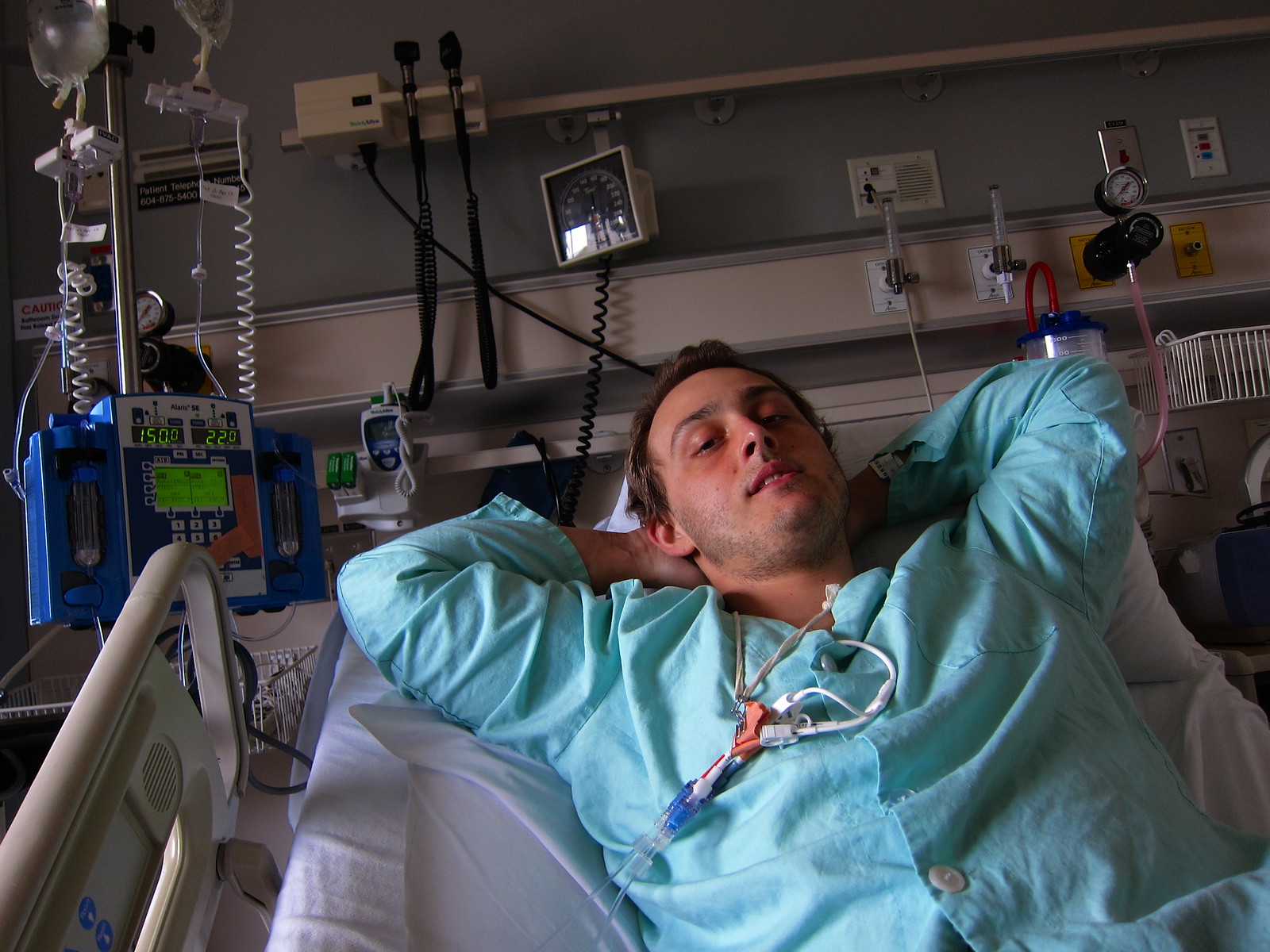 I enrolled in design courses, hoping to fulfill my interests through nautical design (in this way I could build boats instead of sailing them). I volunteered frequently at the a local bicycle recycling centre, acting as if learning more about the mechanical aspects would somehow bring the dream of extended bicycle touring closer to fruition. I’ve also always been drawn towards teaching, gaining experience through part-time work and volunteer opportunities, so when planning for my new future pursuits, it made sense to join an education program.
I enrolled in design courses, hoping to fulfill my interests through nautical design (in this way I could build boats instead of sailing them). I volunteered frequently at the a local bicycle recycling centre, acting as if learning more about the mechanical aspects would somehow bring the dream of extended bicycle touring closer to fruition. I’ve also always been drawn towards teaching, gaining experience through part-time work and volunteer opportunities, so when planning for my new future pursuits, it made sense to join an education program.
So this question of inquiry has been with me since my partner’s diagnosis; how do I maintain my motion-based practice in the midst of stationary circumstances?
My natural state consists of slogging through logs, mud and brush on a cut-block, carrying bags of seedlings on my hip, and sleeping under the stars. All through my adult life, working hard seasonally, and then focusing on my creative goals during the intervals has consistently been my routine. Creative outdoor endeavours are my passion, my guiding motivation, yet, teaching requires extensive time and energy.
As I have experienced thus far in this teaching program, my outdoor practice has been falling by the wayside. There are simply not enough hours in the day to attend classes as well as paddle out to the sailboat I keep anchored close to home. There are seemingly no opportunities to explore new places on foot or on bike outside of the city. I feel as though it’s impossible to create the conditions for adventure, let alone create the conditions for making artwork based on adventure.
In researching for this proposal, I looked into the processes undertaken by other educators to keep teaching and artistic practice in balance. One perspective taken by an educational researcher was to ask whether or not teaching and artistic practice are fused together, or separate endeavours (Sweat, 2006). My response to that idea is that for the most part, they have indeed been completely separate. I am now being asked to fuse outdoor exploration and education together, although they are not conventionally compatible. There are are of course examples of how the two endeavours have been combined successfully, namely robust outdoor education programs that emerge of out traditional school settings that foster true experiential learning (Zink, 2010) or programs that aim to make the entire world a classroom (Class Afloat, 2013). I strongly favour these concepts, and hope that one day they are normalized in education to the point where any teacher candidate with the same combination of interests as mine could easily say, well of course! I want to train to be a teacher-adventurist!
Scrutiny
How does one assess Art in the classroom? How do teachers give marks for visual work?
When I look back to my own high school experience I recall plainly how marks were dolled out in Math class; homework was handed in, quizzes were scored, tests were taken, and numbers were tallied up.
In Science, much the same story, as well as Social Studies, and English. Well actually, in both English and French classes I recall doing a lot of reading, and writing. Did I do the reading? Yes, good, I got my marks. Did I write without making tons of grammatical/vocabulary errors? Yes, good, I got my marks.
But what about Art? It was a large component of my workload in high school, and yet I remember nothing of the marking scheme. Perhaps that is because the scheme was not clear, or maybe I’ve tried to bury the bad memories. Either way, it’s generally an unclear concept.
People often think, you make a boring, ugly painting, you get a bad mark, right? One thing that has become certain in my mind is that Bad Art does not, should not equate to Bad Marks. By ‘Bad Art’ I simply mean not pretty, or not attractive. So far, some of the best work I’ve seen students make was spontaneous, abstract, dicey, obscure. I love the meticulously detailed stuff too, but in the end, what inspires most is the application of energy. That application is experimental — art is experimental in most cases — you never know what the exact outcome will be. In Math class, the teacher knows what the outcome will be. It is understood by both the students and teacher that there are right answers and wrong answers. There are simply no wrong answers in Art. There are safe ways to use materials and techniques, there are successful implementations of tools and methods. However, there is no such thing as a wrong art piece.
Assessment in Art should therefore not emphasize the marking of products, but rather the process. It’s easy to envisage a marking scheme that considers the conduct of students in class — whether or not they are attending, listening, working, contributing. It’s easy to assess whether or not they are applying techniques that are demonstrated, using the time they have to create, or just fooling around instead. I do not believe that the final thing, the art can be assessed officially, but it can indeed be critiqued by themselves and their peers. And the students can learn to critique constructively. Their participation can then in turn be marked.
This Body is a Vessel
There’s never been a time when I’ve felt completely at home in my body. There have always been times where I’ve felt too big or too small, too pimply or too hairy or too smooth, too dark or too light, my hair’s been too curly, my hair’s been too straight.
The performers in high school drama always seemed to know their bodies best – they knew that we’re always shape shifting. They seemed to be most aware of the fact that we are always changing – they just put their minds two steps ahead of their bodies and acted the part. “I’m no octopus, but I might be later on, so here’s how it feels to be an octopus. It’s not so bad – I can maybe get used to this!”
I was working on a series of lesson plans lately that would have the theme of the body. I realized that if there was anything that could get any young person to feel at home in who they live, that’d be a great lesson. How do you get someone to be aware of their body without feeling self-conscious of it? How do you get someone to be conscious of their body if they’re generally unaware?
In the end, I resorted to having the students interact with each others’ bodies. Paint a peer’s legs or arms, or paint their back or face. Is interacting with a friend’s body work out the same issues as working with your own? Now your just comparing bodies. “So and so has blonde hair while mine is just a boring brown.”
The only thing you can do is act like the drama kids and try it on.
The ‘Right’ of the Artist in Visual Research
Back in 2007, Huang Yong Ping attempted to make an installation at the Vancouver Art Gallery entitled Theater of the World. His question was, ‘what will happen if I put a variety of insects together in an enclosed area?’. The BC SPCA came and answered that question promptly for him — ‘we’ll take the interest of even these mere insects into consideration and come and shut your piece down.’
Assistant Professor Donal O’Donoghue at UBC writes in his article “Are We Asking the Wrong Questions in Arts-Based Research?” about Clive Maloney’s piece, Rural Monument (2007) as well. He points out that the work helps cultivate curiosity through ambiguity (O’Donoghue p.356), and so brings attention to the forgotten (in this case, the Irish rural way of life). However, in the context of art-based research, Theater of the World interested me more, having a clearer, and more controversial question.
On the subject of art-based research, my own question continually seems to be, “but what is the question?”. Research is usually a task undertaken when there is a problem needing a solution, a riddle, a conundrum. Art being explorative, it’s understandable that it might not always begin with a clear hypothesis as to what might happen, but I’m starting to understand where the tension arises from between visual and linguistic/scientific research. With art’s ‘open’, ‘unfixed’ and ‘fluid’ nature, in many cases the concept isn’t even clear. How can there be widespread discussion if no one knows the premise? “Ambiguity can lose all communicative value,” O’Donoghue, himself, cautions (p.359).
On this particular level, I appreciate what Huang Yong Ping was attempting to do. He wondered what might happen, assembled the ‘materials’ and then proceeded to run the ‘experiment’. I would argue though, that the question was not worth the lives of the insects involved.
“That the animal-rights concerns eventually took precedence over the artistic integrity of the work raises important questions about artistic freedom,” writes O’Donoghue. “Yes,” I pondered also, “since when does anyone, artist or otherwise, have the ‘freedom’ to be cruel?”. We are all technically free to hurt one another, and we are all technically free to kill insects. What seems important to consider, nevertheless, is ethics in research — both in the visual and scientific fields. Some recent personal experiences in life have led me to grapple with the costs of say, animal experimentation versus saving the lives of many individuals with the use of medical treatment derived from those experiments.
I struggle with the issue of animal testing and medical advancement, but I do not grapple with the question in Ping’s piece. Again, I would argue that the question was not worth the lives of the lowly of creepy crawlies involved. Small-scale cruelty for the purpose of entertainment, pseudo-inquiry about insect life and nature should not be a standard of ethical visual research. Although the work was successful in some ways, initiating much public conversation and demonstrating, metaphorically, socially, what happens if you put a variety of insects together in an enclosed space, I would like to remind myself and others that ethics matter, that sometimes as artists/humans we may have the ‘right’ and opportunities to carry out violent acts on animals, but that we are not ‘righteous’ in doing so. What is the purpose, in any case, if the research is not representative of positive human endeavor? What kind of model for art-based education inquiry would we be setting?

